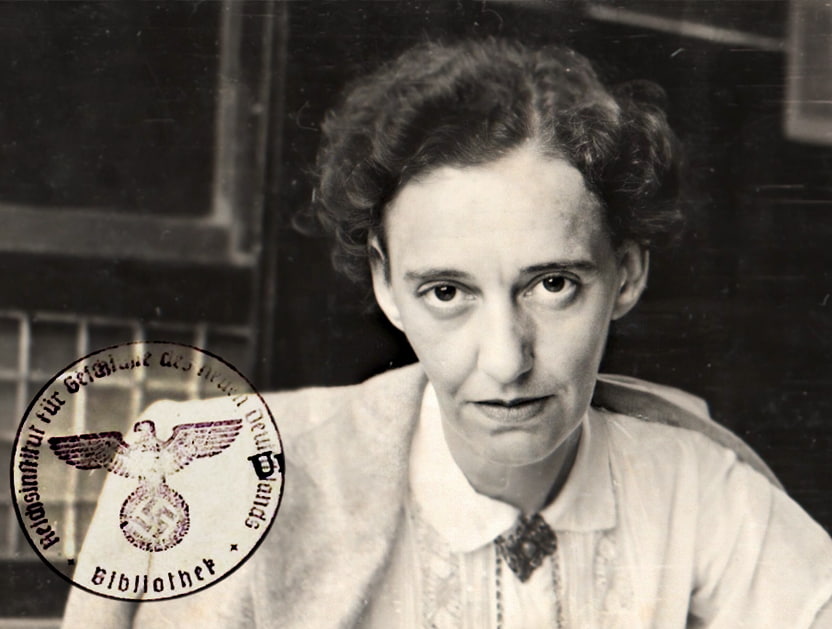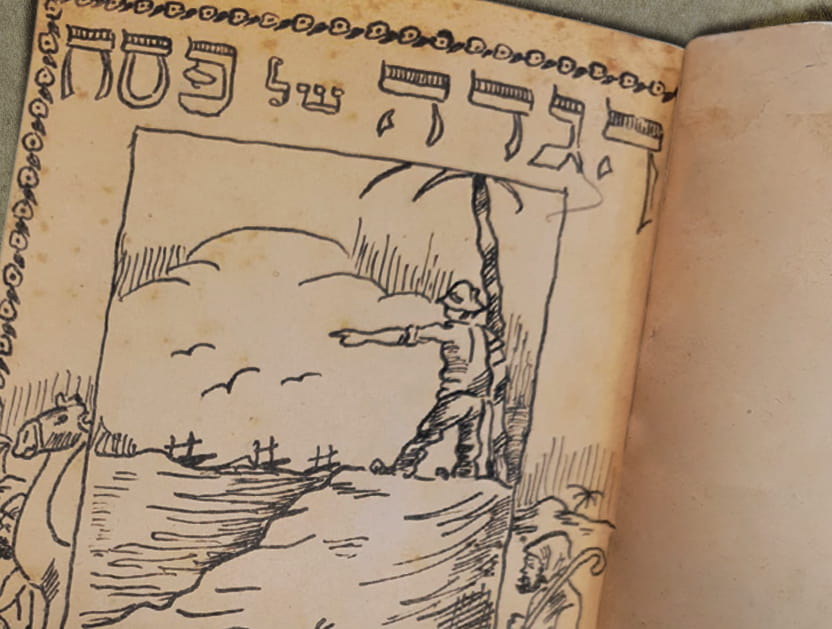בנציון דינור (1884 חורול - 1973 ירושלים) היסטוריון של תולדות עם ישראל, איש חינוך, פעיל ציוני וחבר הכנסת הראשונה (מטעם רשימת מפלגת מפא"י, 1951-1949), שכיהן כשר החינוך והתרבות בממשלת ישראל (1955-1951), וחתן פרס ישראל (פעמיים). דינור היה מעמודי התווך של מה שלימים כונה "האסכולה הירושלמית" – ניסיון להבין את תולדות העם היהודי מתוך מרכזיות ארץ ישראל. בנציון דינור היה תלמיד בישיבות טלז וסלובודקה, למד באוניברסיטאות ברלין (1913-1911), ברן (1915-1913) ופטרוגרד (1917-1915). הוא עבד כמורה בבתי ספר יהודיים במקומות שונים באימפריה הרוסית, והשתתף באופן פעיל בחיים הציבוריים ופוליטיים של יהודי רוסיה. הוא נמנה עם פעילים בחברה להפצת ההשכלה בקרב יהודי רוסיה ובמפלגת הפועלים הציונית-הסוציאליסטית. ב-1921 קיבל מהרשויות הסובייטיות היתר לעזוב את ברה"מ ועלה לא"י. זמן קצר לאחר מכן התחיל לעבוד כמורה בבית המדרש למורים בבית הכרם בירושלים. מאוחר יותר הפך אף למנהל המוסד החינוכי הזה (1948-1943). בשנת 1936 דינור מונה להיות מרצה להיסטוריה יהודית באוניברסיטה העברית. הוא היה בין המייסדים והעורכים של הרבעון הביבליוגרפי "קרית ספר", השבועון לחקר תולדות ישראל "ציון", ושל פרויקטים היסטוריוגרפיים אחרים הקשורים בחקר תולדות היהודים, הציונות והיישוב. דינור עמד במשך עשרות שנים בראש הארכיון הכללי לתולדות ישראל - לימים הארכיון המרכזי לתולדות העם היהודי בירושלים. הוא היה אחד הדמויות המרכזיות בחברה ההיסטורית הישראלית, ומשנת 1953 עד 1959 כיהן כיו"ר יד ושם. האוסף הפרטי של בנציון דינור מורכב מחומרים הקשורים בחייו, עבודתו המחקרית ופעילותו הציבורית בתקופות שונות ובמקומות שונים. האוסף מכיל התכתבות ענפה של דינור, יומנו, מסמכים אישיים ותמונות. חלק חשוב מהאוסף הינם חומרים הקשורים במחקריו ההיסטוריים ובפעילותו בשדה החינוך. כאן שמורים: טיוטות של מאמריו, ספריו והרצאותיו; מחברותיו עם מערכי שיעור; ביבליוגרפיות שערך; רשומות שונות; דוחות עבודה; סקירות על יצירות וספרים שונים; העתקים ותרגומים של מקורות היסטוריים בהם השתמש. האוסף מכיל גם מסמכים פנימיים (כולל פרוטוקולים וסיכומי פגישות) של מוסדות שונים בתוכם דינור עבד: החברה ההיסטורית הישראלית; הארכיון הכללי לתולדות ישראל (לימים אמת"י); יד ושם; בית המדרש למורים בבית הכרם; האוניברסיטה העברית; ועדת חינוך של הכנסת; ממשלת ישראל ועוד רבים אחרים. בנוסף, האוסף מכיל קטעים מעיתונים וכתבי-עת עם כתבות על דינור, מאמרים פרי עטו, ומאמרים בנושא הציונות --

| כותר |
Dinur, Benzion. |
|---|---|
| יוצרים נוספים |
Dinur Yehoshua Menahem Mendel,Schneersohn 1789-1866 Hayyim Nahman,Bialik 1873-1934 Abraham,Mapu 1808-1867 SamuelEttinger S. N.Eisenstadt (Shmuel Noah), 1923-2010 Salo W.Baron (Salo Wittmayer), 1895-1989 Jacob,Lestschinsky 1876-1966 Joseph,Klausner 1874-1958 Nathan,Rotenstreich 1914-1993 David,Ben-Gurion 1886-1973 Hochschule für die Wissenschaft des Judentums (Berlin, Germany) Mifleget poʻale Erets Yiśraʼel (Political party) Israel. Miśrad ha-ḥinukh ṿeha-tarbut Yeshivat Ṭelz Obshchestvo dli︠a︡ rasprostr. prosv. mezhdu evrei︠a︡mi v Rossīi Tsiyonisṭish-sotsyalisṭishe arbayṭer parṭey (Soviet Union) ha-Mikhlalah le-ḥinukh ʻal shem Daṿid Yelin (Jerusalem) Hebrew University of Jerusalem ha-Arkhiyon ha-kelali le-toldot Yiśraʼel Central Archives for the History of the Jewish People ha-Ḥevrah ha-hisṭorit ha-Yiśreʼelit Yad ṿa-shem, rashut ha-zikaron la-Shoʼah ṿela-gevurah Israel. Keneset Devir (Firm) Mosad Byaliḳ Makhon le-tatslume kitve-ha-yad ha-ʻIvriyim (Jerusalem) Hekhal ha-sefer (Jerusalem) ha-Arkhiyon ha-Tsiyoni ha-merkazi Muzeon Zahal Yivo Institute for Jewish Research Yad Yitsḥaḳ Ben-Tsevi World Union of Jewish Studies ha-Aḳademyah ha-leʼumit ha-Yiśreʼelit le-madaʻim ha-Histadrut ha-kelalit shel ha-ʻovdim be-Erets-Yiśraʼel Histadrut ha-morim be-Yiśraʼel Moʻatsah le-haśkalah gevohah (Israel) |
| הערות |
The Central Archives for the History of the Jewish People also holds the archives of the Israeli Historical Society, which for decades was headed by Dinur, as well as archives of other prominent historians who corresponded with him, such as Baer, Halperin, and Ettinger. The CAHJP also holds copies of Benzion Dinur's correspondence with Soviet authorities in Belarus and Ukraine as Yad Vashem’s director. The correspondence concerns Dinur's requests of 1957 to send to Israel the remains of Jews who were murdered during the Holocaust and symbolic ashes from the mass graves of the Jews (RU-1866 RU-1915 RU-1916) (originals of the letters located at the National Archives of Belarus and Central State Archives of Public Organizations of Ukraine). In addition, papers of Benzion Dinur's are located in The National Library of Israel: the card catalog of press and bibliography composed by Dinur (ARC. 4* 1507) letters by Dinur to Martin Buber from 1953-1961 on the World Union of Jewish Studies (ARC. Ms. Var. 350 008 178b) correspondence with Gershom Scholem from 1951-1971 (ARC. 4* 1599 01 580) correspondence with Abraham Shalom Yahuda from 1912 (ARC. Ms. Var. Yah 38 01 641) and correspondence with Avraham Ben Mordechai Kahana from 1924-1930 (ARC. 4* 1569 1 170). The Gnazim Archive of the Hebrew Writers Association also contains correspondence of Benzion Dinur with various figures including Shlomo Zemach, Yohanan Twersky, Rivka Alper, Benjamin Brenner and others. |
| מתוך |
Dinur, Benzion - Private Collection |
| רמת התיאור |
Fonds Record |
| תקציר ביוגרפי |
Benzion Dinur (Dinaburg) was born in 1884 in Khorol – a small town in the Ukrainian province of Poltava (then, part of the Russian Empire). Dinur’s great-grandfather was the rabbi of Poltava, of Khorol, and a follower of Rebbe Mendel of Lubavitch. He was a pupil of the Telsh and Slobodka yeshivot, and in 1911 entered the "Hochschule fuer die Wissenschaft des Judentums" in Berlin. He also studied at the Universities of Berlin (1911-1913), Berne (1913-1915) and Petrograd (1915-1917). In Russia, he taught in several Jewish schools in Priluki (1902-1903), Odessa (1904), Poltava (1908-1909), Kherson (1910-1911), Petrograd (1916-1918), Kiev (1918-1920). In 1920-1921 he was a lecturer at the University of Odessa. In Russia, Benzion Dinur was also very active in communal affairs and Jewish political life particularly in connection with the Society for the Promotion of Enlightenment among the Jews (OPE), and Zionist Socialist Workers Party. He was the head of the party's regional committee in Kiev (1906) and Kharkov (1907). In 1921, with a group of Hebrew writers, Dinur received an exit permit from the Soviet authorities, and settled in Palestine. Soon thereafter he joined the Jewish Teachers' Training College in Jerusalem as a teacher and later became its principal. In 1936 he was appointed lecturer in modern Jewish history at the Hebrew University. In his numerous historical works Dinur largely contributed to the elaboration of an historical method around a "Palestinocentric" vision of the entire course of the Jewish history (“Jerusalem School”). He stressed the national value of the Jewish communal presence in Eretz Israel over the generations. One of his major historical works was Toledot Yisrael (A History of the Jewish People, 1919–1939) into two sections: Yisrael be-Arso (Israel in Its Country) and Yisrael ba-Golah (Israel in the Dispersion). Dinur was among the founders and editors of the bibliographical quarterly Kirjath Sepher, the historical annual (later quarterly) Zion, the Sefer ha-Yishuv (2 vols., 1939–44), Sefer ha-Ẓiyyonut (1938, 1954), Toledot ha-Hagganah (1954–59), and more. He was one of the central figures in the Israeli Historical Society and the Jewish Historical General Archives (later the Central Archives for the History of the Jewish People), and from 1953 to 1959 served as president of Yad Vashem. In 1949, Dinur was elected to the first Knesset on the Maipai party list, and he served as Minister for Education and Culture from 1951 to 1955. In 1958 he was awarded the Israel Prize in Jewish studies, and in 1973 the prize in education. He died in Jerusalem in 1973. |
| היסטורית בעלים |
Transferred by Benzion Dinur to the archives mainly in 1960, 1968 and 1970. |
| הערת שפה |
Russian Yiddish Hebrew French German English |
| קרדיטים |
הסדרה העוסקת בפעילותו של דינור כח"כ ושר בממשלות ישראל עברה תהליך חשיפה באמצעות ארכיון המדינה. מרבית התיקים באוסף פתוחים לעיון באופן מלא, ושני תיקים ניתנים לעיון רק כעותק דיגיטלי, שעבר השחרה בחלקו. |
| מספר מערכת |
990043213600205171 |
| קישורים |
פרטים על מיקום החומר/Location&access |
-
-
-
-
-
-
-
-
-
-
-
-
-
-
-
-
-
-
-
- הצג את 10 הפריטים הבאים מתוך 480
- הצג הכל
-
-
בכל שימוש יש לציין את מקור הפריט בנוסח הבא:
הסדרה העוסקת בפעילותו של דינור כח"כ ושר בממשלות ישראל עברה תהליך חשיפה באמצעות ארכיון המדינה. מרבית התיקים באוסף פתוחים לעיון באופן מלא, ושני תיקים ניתנים לעיון רק כעותק דיגיטלי, שעבר השחרה בחלקו.
תנאי השימוש:
לכל תיק בארכיון נקבעו תנאי השימוש המתאימים
תנאי השימוש מופיעים בדף התיק הארכיוני באתר הספרייה הלאומית.
למידע נוסף על שירות בירור מצב זכויות היוצרים ותנאי השימוש בפריטים מאוספי הספרייה לחצו כאן.
תצוגת MARC
יודעים עוד על הפריט? זיהיתם טעות?

 כניסה עם גוגל
כניסה עם גוגל
 כניסה עם פייסבוק
כניסה עם פייסבוק



